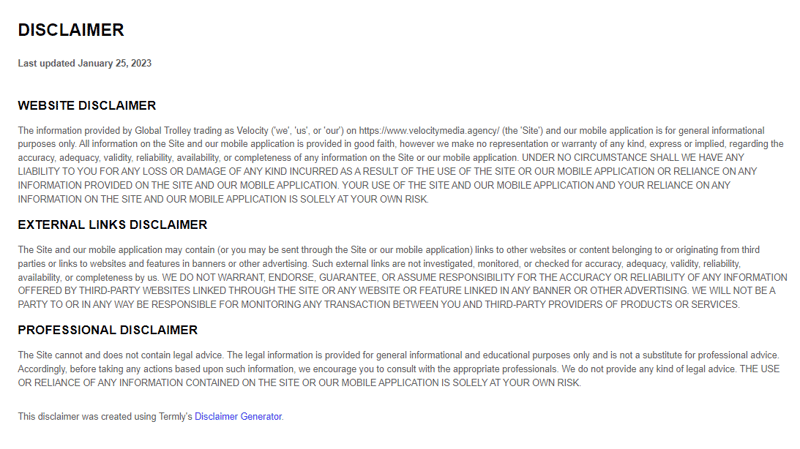Services List
Companies can achieve many benefits by strengthening their relationships with the customers they already have. By improving customer data, organisations can deliver improved and personalised marketing content.

The GDPR, POPIA and PAIA Acts have obliged organisations to protect their existing customers’ data privacy with great care, and these legislations have thrown the spotlight on the way in which customers establish trust with the brands they are loyal to. Customer confidence about the security of their personal data and the value they place on relevant and useful marketing content has never been at a higher premium. Providing a product or service to customers when they need it most benefits companies and consumers, and lays the foundation of trust and a meaningful relationship between the two.[1]
Covered in this article
Choosing The Correct Communication Channel
Data Cleansing
Customer Segmentation
Event Tracking
Automation
Big Data Use
Benefits Of Customer Loyalty
Analytics Software Provides Solutions To Pain Points
Using Existing Customer Data To Attract Leads
Choosing The Correct Communication Channel
Based on customer behaviour, for example, their preferred communication channel, companies can choose the correct channel(s) to communicate with them with timely, relevant and engaging content. Retention rates are bolstered, and conversion rates increase. Laser-sharp targeting and personalised relationships also come from knowing what current customers are doing at a point in time, or if they have an imminent occasion coming up, such as a birthday or anniversary.[2]
Creative or artistic use of the data (science) a brand contains is on the rise regarding long-term relationships with customers. Reusing data using online and offline channels involves programmatic marketing, where a marketing algorithm decides where the most effective use of an ad is on what channel and at what time. The combination of creative data usage and programmatic campaigns ensures a long-term, fruitful and trusting relationship between the company and the customer.[3]
Data Cleansing
One way of clearing the path to developing trust with customers is to clean up their data. Customer data tends to be dirty, easily fabricated and contains multiple data entry mistakes. Its decay rate is quick and is often difficult to correct. That’s why clean data is essential to ensure that customer profiles are not dead leads with incorrect contact information.[4]
Clean customer data provides useful information that leads to smoother customer communication, improved customer experiences, increased business productivity and revenue, and enhanced data analysis for strategising and decision-making. Clean data involves standardised data organisation and formatting; data appending – adding missing data to an unfinished data set; and updating and correcting existing data.[5]
Customer Segmentation
Customer relationships with companies are aligned, personalised and cemented by segmenting customers, based on shared characteristics such as demographics and behaviours. Marketing personas are personifications of customer segments. Customers can be segmented based on who they are, using criteria such as age, geography, type of job, income, relationship status and family.[6]
Customers can also be segmented by what they do, segmented by their share of wallet, basket size, tenure, and long-term loyalty, among others. All this data can be collected via direct and indirect streams. Direct streams include relationship surveys, post-purchase surveys and brand tracking. Indirect streams include voice IQ, social listening and frontline feedback. All in all, segmentation enables meaningful messaging and product/service positioning for customers and enhances companies’ bottom line.[7]

Event Tracking
Event tracking bolsters customer relationships by allowing their activity to be voluntarily recorded, and by so doing enabling them to be filtered and messaged depending on the actions they take. Customers are able to be recorded as events while logged into a specific product via the web or mobile, or while visiting a website. This information includes the links that were clicked, the pages that were visited and the downloading of content.[8]
Every time a customer takes an action, the event records the details of the action – metadata – in addition to the first, last and total number of times the customer has taken that action. Using event tracking software, organisations are able to perform filtering and custom-send clients' messages based on their actions. By filtering customers according to events, companies can build a segment or audience based on their actions.[9]
Automation
Organisations and customers are able to easily reap the benefits of data and data analytics automation. Data analysis operates in real-time, with feedback provided while business processes play out. This enables course correction and a stronger bottom line for companies. De-siloed sales and marketing teams ensure business synergy, ensuring internal stakeholders are working on the same page, while the customer benefits from the integrations. Automation can be used to enable the production of email campaigns that engage existing consumers, for example.[10]
With automation, computer processes automate the process of data analysis more efficiently and accurately than manual processes. Automation saves companies time and money, allowing data scientists to focus on higher-value functions. Automation results in high-quality data, more easily allowing interpretation and course correction, with employees able to use their time more effectively.[11]
Big Data Use
As companies lean more into big data to develop current customer relationships, technology has enabled the collection and storage of progressively detailed customer information. Big data analytics looks at large data sets across multiple domains to reveal concealed patterns that reveal significant trends in customer behaviour, using real-time, static, structured or unstructured data. The result is increased retention rates, enhanced customer relationships, and the ability to tweak customer pain points and resolve bottlenecks that lead to customer churn.[12]
Once the existing audience/customer base’s historical data has been collected, companies can pivot or double down on marketing and content strategies going forward in order to develop stronger relationships with customers, with deeper insights into their needs. It’s well-recognised that it is more cost-effective to maintain existing clients than it is to get new ones, so deeper dives into analysing the latter’s historical big data to more accurately pinpoint their needs is key.[13]
Benefits Of Customer Loyalty
When it comes to revenue, loyal customers create more revenue than a customer who buys once or twice, before pivoting to competitors. In addition, loyal customers are more inclined to be brand ambassadors for a product or service, proclaiming their benefits to their peers on social media and review platforms. Peer opinion trust trumps any advert.[14]
Companies can be proactively involved in combining multiple data sources, as well as combining data repository silos as a result of legacy data infrastructure, in order to drill deeper to find richer insights into their customers’ needs. Loyal customers are developed using data-driven strategies for sustainability, and provide their company base with eased retargeting, converged analysis, free brand endorsement and heightened brand equity.[15]
Personalisation And Predictive Modelling
Predictive modelling, knowing what customers are likely to need or want in the future, is achieved with a combination of big-picture data, transactional data (historical purchases) and granular data (customers’ behaviours, interests and attitudes).[16]
Post-pandemic, customers have come to expect a degree of personalisation regarding brand interaction. So it makes financial and transactional sense to identify the sales funnel pain points when customers abandon their carts, bounce from websites, unsubscribe from email lists or remove their accounts. Identifying what company actions have led to these disengagements allows companies to maintain customer retention and keep them moving through the stages of the sales funnel.[17]
Analytics Software Provides Solutions To Pain Points
This can be achieved by using analytics software to measure bounce rates, making websites more user-friendly, increasing load times and improving user experience and design, bolstering site speed and call-to-action placement targeting adverts to return users and customers and sending personalised reminder emails (items left in carts and recommendations based on previous views, for example).[18]
Data harvested from multiple customer visit sessions, via different devices and sources, can be aggregated to create a single repeat customer profile that is constantly updated, making for an evolving dataset that enables the messaging of hyper-personalised messaging and content. Providing specialised solutions to single customer pain points in their buyer journey means customers will provide additional information about themselves in exchange.[19]
By using a CRM (customer relationship management) tool, customer data is kept accessible and easy to access or input. Every current customer interaction is recorded, enabling follow-up communication that is timely, relevant and personalised. This nudges customers further into the sales funnel and builds the foundation for a more complete customer profile, making for quality customer relationships built on trust.[20]
Using Existing Customer Data To Attract Leads
Leveraging existing customer data to attract new customers involves mining the historical data of existing customers to anticipate the wants and needs of potential clients. This can be obtained through data about customer life stages and situations, historical moments relating to the interaction existing customers have with traditional or social media, and brand-inspired moments created by newsletters, emails, codes and discount offers companies send to their existing clientele.[21]
Removing barriers to existing customer experiences paves the way for attracting new business, such as eliminating steps to purchase. Using the frequently asked questions existing customers have allows companies to preempt and provide solutions for concerns future customers may express. This reinforces trust and creates a positive brand experience, boosting the bottom line and customer satisfaction.[22]
As Andrew Davis remarks, ‘Viewing your customer data with a relationship-building lens can help uncover opportunities to act on the moments that inspire customers and adjust the experience to speak to them. The resulting positive associations with your brand − especially in comparison with your competitors − can transform customers into lifelong fans.’[23]
References
[1] S. Hemsley, ‘Top ways to use data to build relationships‘, MarketingWeek, London, Centaur Media plc, 2016, https://www.marketingweek.com/top-ways-to-use-data-to-build-relationships/, (accessed 3 January 2023).
[2] Hemsley, ‘Top ways to use data to build relationships‘.
[3] Hemsley, ‘Top ways to use data to build relationships‘.
[4] N. Wieder, ’How to Use Data Cleaning to Clean up Your Customer Data’, Medium, San Francisco, A Medium Corporation, 2019, https://medium.com/@searchbug/how-to-use-data-cleaning-to-clean-up-your-customer-data-2ee11677f487, (accessed 3 January 2023).
[5] Wieder, ‘How to Use Data Cleaning to Clean up Your Customer Data’.
[6] ‘What is customer segmentation, and how can it help?’, QualtricsXM, Seattle, SAP, 2023, https://www.qualtrics.com/uk/experience-management/brand/customer-segmentation/?rid=ip&prevsite=en&newsite=uk&geo=ZA&geomatch=uk, (accessed 3 January 2023).
[7] ‘What is customer segmentation, and how can it help’.
[8] D. Alexander, ‘Record customer activity with event tracking. Filter and message your customers based on actions they take’, Intercom, San Francisco, Intercom, 2022, https://www.intercom.com/help/en/articles/216-record-customer-activity-with-event-tracking-filter-and-message-your-customers-based-on-actions-they-take, (accessed 3 January 2023).
[9] Alexander, ‘Record customer activity with event tracking’.
[10] W. Lopez, ‘How Customer Data Analytics and Automation Can Boost Your Company’s Performance’, RevOptics, [web blog], Austin, Vertify, 2022, https://revoptics.io/blog/how-customer-data-analytics-and-automation-can-boost-your-companys-performance/, (accessed 3 January 2023).
[11] Lopez, ‘How Customer Data Analytics and Automation Can Boost Your Company’s Performance’.
[12] ‘How Big Data And Analytics Can Build Better Customer Relationships’, Bista Solutions, [web blog], Atlanta, Bista Solutions Inc., https://www.bistasolutions.com/resources/blogs/how-big-data-and-analytics-can-build-better-customer-relationships/, (accessed 4 January 2023).
[13] ‘How Big Data And Analytics Can Build Better Customer Relationships’.
[14] ‘How Big Data And Analytics Can Build Better Customer Relationships’.
[15] ‘How Big Data And Analytics Can Build Better Customer Relationships’.
[16] ‘How Big Data And Analytics Can Build Better Customer Relationships’.
[17] P. Sharma, ‘Using Data to build your Customer Relationships’, Medium, San Francisco, A Medium Corporation, 2020, https://medium.com/swlh/using-data-to-build-your-customer-relationships-d93fb3ac7f67, (accessed 4 January 2023).
[18] Sharma, ‘Using Data to build your Customer Relationships’.
[19] Sharma, ‘Using Data to build your Customer Relationships’.
[20] Sharma, ‘Using Data to build your Customer Relationships’.
[21] T. Treanor, ‘Are You in the (Loyalty) Loop? How Customer Data Builds Relationships’, Treasure Data, [web blog], Mountain View, Treasure Data, Inc., https://blog.treasuredata.com/blog/2020/08/10/how-customer-data-builds-relationships/, (accessed 4 January 2023).
[22] Treanor, ‘Are You in the (Loyalty) Loop?’.
[23] Treanor, ‘Are You in the (Loyalty) Loop?’.





